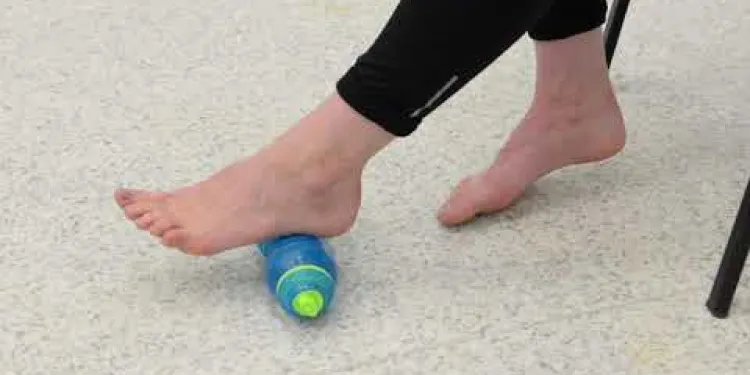
Find Help
More Items From Ergsy search
-

Is a facelift painful?
Relevance: 100%
-

What is a Facelift?
Relevance: 68%
-

What is a mini facelift?
Relevance: 66%
-

Are non-surgical facelifts effective?
Relevance: 63%
-

What is the recovery time for a facelift?
Relevance: 62%
-

How much does a facelift cost?
Relevance: 61%
-

Will a facelift remove all my wrinkles?
Relevance: 61%
-

Can a facelift be combined with other procedures?
Relevance: 60%
-

Who is an ideal candidate for a facelift?
Relevance: 59%
-

How long do the results of a facelift last?
Relevance: 58%
-

Will I have visible scars after a facelift?
Relevance: 57%
-

What are the common side effects after a facelift?
Relevance: 56%
-

How soon can I return to work after a facelift?
Relevance: 53%
-

How soon can I return to work after a facelift?
Relevance: 53%
-

What should I expect during a consultation for a facelift?
Relevance: 52%
-

Are there any risks associated with facelifts?
Relevance: 51%
-

How should I prepare for a facelift?
Relevance: 49%
-

How is a facelift performed?
Relevance: 45%
-

Is financing available for a facelift?
Relevance: 44%
-

How do I choose a qualified facelift surgeon?
Relevance: 39%
-

Foot Pain
Relevance: 37%
-

Is impetigo painful?
Relevance: 37%
-

Is a mammogram painful?
Relevance: 36%
-

Shoulder pain | NHS
Relevance: 35%
-

Shoulder pain | NHS
Relevance: 35%
-

Heel pain | NHS
Relevance: 35%
-

Are chiropractic treatments painful?
Relevance: 34%
-

Mechanical Lower Back Pain
Relevance: 33%
-

Will I feel pain during the procedure?
Relevance: 33%
-

Advice on neck pain and whiplash
Relevance: 33%
-

Stomach ache and abdominal pain
Relevance: 33%
-

Period pain (dysmenorrhoea) - BSL
Relevance: 33%
-

Shoulder subacromial shoulder pain
Relevance: 33%
-

Shoulder pain | NHS
Relevance: 32%
-

Is the womb lining test painful?
Relevance: 32%
-

How to treat back pain | NHS
Relevance: 31%
-

How to deal with period pain | NHS
Relevance: 31%
-

How to deal with period pain | NHS
Relevance: 31%
-

Is a womb lining test painful?
Relevance: 31%
-

How to deal with period pain | NHS
Relevance: 31%
Understanding the Facelift Procedure
A facelift, or rhytidectomy, is a cosmetic surgical procedure designed to give a more youthful appearance to the face. It typically involves the removal of excess facial skin, with or without the tightening of underlying tissues, and the redraping of the skin on the patient's face and neck. Many in the UK consider facelifts as a means to combat signs of aging and improve self-esteem.
Is the Facelift Procedure Painful?
The perception of pain during and after a facelift can vary significantly among individuals. During the procedure itself, patients generally do not feel pain due to the use of general anesthesia or local anesthesia with sedation. This ensures that the patient is comfortable and relaxed during the operation.
Post-Operative Discomfort and Pain
After the effects of anesthesia wear off, it's common for patients to experience some discomfort. However, severe pain is typically rare. Most patients report mild to moderate discomfort that can be managed with prescribed pain medication. The feeling of tightness, swelling, and bruising is quite common in the days following the surgery, but these symptoms generally begin to subside within a week or two.
Managing Pain and Recovery
Surgeons usually provide detailed aftercare instructions to manage any discomfort and facilitate a smooth recovery. This may include prescribed pain relief, applying cold compresses to reduce swelling, and keeping the head elevated. Patients are often advised to avoid strenuous activities for a few weeks and to follow any specific advice regarding cleaning and dressing the surgical sites.
Individual Pain Threshold and Expectations
It is essential to understand that individual experiences with pain can vary. Some patients have a higher tolerance for pain and may experience the recovery period more comfortably. Others might find the process more challenging. Therefore, setting realistic expectations by discussing concerns with the surgeon prior to the surgery is crucial.
The Emotional Aspect of Recovery
A facelift can have significant emotional implications. Experiencing changes in appearance as swelling subsides and bruising heals can be emotionally challenging for some patients. Support from healthcare professionals, as well as friends and family, can be beneficial during this recovery period. Professional advice and support, sometimes offered by clinics, can help manage emotional responses and guide patients through their healing journey effectively.
Conclusion
While a facelift is a surgical procedure that involves some degree of discomfort, most patients find the pain to be manageable with the right care and pain management strategies. It’s important for patients in the UK to thoroughly research and consult with qualified cosmetic surgeons to understand the potential for pain and how it can be effectively managed. This ensures a smoother recovery and satisfaction with the procedure's results.
Understanding the Facelift Procedure
A facelift is a type of surgery that helps make your face look younger. It involves removing extra skin from the face and sometimes tightening the tissues underneath. Many people in the UK get facelifts to look younger and feel better about themselves.
Is the Facelift Procedure Painful?
People feel pain differently, so it can vary from person to person. During the facelift, a doctor gives medicine so you won't feel pain. This is called anesthesia, and it helps you feel comfortable and relaxed while the doctor works.
Post-Operative Discomfort and Pain
After the anesthesia wears off, you may feel some discomfort. It's unusual to feel a lot of pain. Most people feel mild to moderate discomfort, which can be helped with medicine. Your face might feel tight and be swollen or bruised, but this usually gets better in about one to two weeks.
Managing Pain and Recovery
Doctors give instructions to help you feel better after surgery. They might tell you to take pain medicine, use cold packs to reduce swelling, and keep your head up. You should avoid doing hard activities for a few weeks. Follow the doctor's advice on how to take care of your face after surgery.
Individual Pain Threshold and Expectations
Everyone feels pain differently. Some people don't feel much pain, while others feel more. It's important to talk to your doctor about what to expect. This helps you be ready for what happens after surgery.
The Emotional Aspect of Recovery
Getting a facelift can also affect how you feel emotionally. As your face heals, you might feel different about how you look. It's good to have support from doctors, friends, and family. Some clinics offer advice and support to help you feel better during recovery.
Conclusion
Having a facelift can involve some discomfort, but most people find it manageable with good care. It's important to talk to qualified doctors in the UK to learn more about what to expect. This helps you have a smoother recovery and be happy with the results.
Frequently Asked Questions
Is a facelift painful?
A facelift can cause some discomfort, but pain is usually manageable with prescribed medication.
What kind of anesthesia is used during a facelift?
Facelifts are typically performed under general anesthesia or local anesthesia with sedation to ensure comfort during the procedure.
How long does the pain last after a facelift?
Most patients experience some discomfort for a few days post-surgery, which can be controlled with pain medication. Significant pain usually subsides within the first week.
Are there ways to reduce pain after a facelift?
Pain can be minimized by following post-operative care instructions, taking prescribed medication, and applying cold compresses to reduce swelling.
What can I expect during the recovery period?
During recovery, you may experience swelling, bruising, and mild pain. These symptoms typically improve within two weeks.
Is it normal to experience tightness after a facelift?
Yes, tightness is a common sensation after a facelift and should gradually decrease as you heal.
How can I manage swelling after a facelift?
Swelling can be managed by keeping your head elevated, avoiding strenuous activities, and following your surgeon’s care instructions.
Will my face look natural after a facelift?
A well-executed facelift aims to produce a natural and rejuvenated appearance. Discuss your goals with your surgeon to ensure satisfactory results.
How soon can I return to normal activities after a facelift?
Most patients can resume normal activities in two to three weeks, but strenuous activities should be avoided for at least four to six weeks.
How can I prepare for a facelift to reduce pain?
Preparation includes discussing pain management plans with your surgeon, arranging post-operative care, and following any pre-surgery instructions.
Are there any non-surgical alternatives to a facelift?
Yes, non-surgical options such as Botox, fillers, and laser treatments can offer temporary rejuvenation but are less effective than surgical facelifts.
Can I take over-the-counter pain relievers after a facelift?
It's important to follow your surgeon's recommendations, as some over-the-counter medications, like aspirin, can increase bleeding risk.
Will I have scars after a facelift?
Facelift incisions are typically placed in inconspicuous locations and scars generally fade over time.
When will I see the final results of my facelift?
While initial improvements can be seen once swelling decreases, final results can take several months to fully develop.
How can I ensure a successful recovery from my facelift?
Follow your surgeon’s post-operative care instructions, attend follow-up appointments, and avoid any activities that may impact healing.
Is emotional distress common after a facelift?
Some patients may experience an emotional adjustment period as they heal and adjust to their new appearance.
How should I sleep after a facelift to minimize pain?
Sleeping with your head elevated on several pillows or a wedge pillow can help minimize swelling and discomfort.
Are there any risks of undergoing a facelift?
As with any surgery, there are risks such as infection, bleeding, and anesthesia complications, but these are rare with proper care.
Will I have sensation changes in my face after a facelift?
Temporary numbness or tingling is common and usually resolves as the nerves heal over several weeks to months.
How long does a facelift procedure typically take?
The facelift procedure usually takes about two to four hours, depending on the extent of the surgery.
Does a facelift hurt?
A facelift is an operation to make your face look younger.
After the surgery, you might feel sore, but doctors can give you medicine to help.
It is important to rest and follow the doctor's advice to feel better faster.
If you are worried, ask a grown-up or a doctor to explain more.
Using pictures and videos can help you understand the process better.
A facelift can make you feel a bit sore, but any pain can usually be helped with medicine from the doctor.
What medicine helps you sleep during a facelift?
When you have a facelift, doctors use special medicine to help you sleep and not feel pain. This medicine is called anesthesia.
There are different types of anesthesia:
- Local anesthesia: This makes a small area numb where the doctor will work. You stay awake.
- General anesthesia: This makes you sleep deeply and not feel anything. You won't remember the surgery.
- IV sedation: This helps you relax and feel sleepy, but you may still be a little awake.
Doctors will choose the best one for you. It keeps you safe and comfortable. You can ask your doctor to explain more if you need help.
When you get a facelift, doctors use special medicine to make sure you don't feel pain. This can be heavy sleep medicine or just something to help you relax.
How Long Does Pain Last After a Facelift?
Most people feel a bit of pain for a few days after surgery. Medicine can help with the pain. The strong pain usually gets better in the first week.
How can you feel less pain after a facelift?
Here are some ways to help you feel better after a facelift:
- Listen to your doctor: Always follow what your doctor says. They know how to help you heal safely.
- Use medicine: Ask your doctor if you can take pain medicine. It can help make the pain go away.
- Use ice packs: Put ice packs on your face. This can help reduce swelling and pain.
- Rest: Make sure to rest a lot. Your body needs time to heal.
- Supportive pillow: Use a soft pillow to keep your head raised. This helps with swelling.
Remember to talk to your doctor if the pain gets worse or if you have questions. They are there to help you.
You can help stop pain after surgery by doing a few things. Follow the doctor's instructions for care. Take the medicine the doctor gives you. Put a cold pack on the area to stop swelling.
What happens while I get better?
While you get better, you might see some swelling, bruising, and feel a little pain. These usually get better in two weeks.
Is it normal to feel tight after a facelift?
Yes, feeling tight after a facelift is normal. This feeling should slowly get better as you heal.
What can I do if my face swells after a facelift?
If your face is puffy after surgery, try these things:
- Use Ice Packs: Gently put ice on your face to help the swelling go down.
- Keep Your Head Up: Sleep with your head on extra pillows to stop your face from swelling more.
- Drink Water: Water helps your body heal and can make swelling less.
- Rest: Take it easy and rest as much as you can. Your body needs time to heal.
- Ask Your Doctor: Talk to your doctor if the swelling does not go down.
These steps can make your face feel better after a facelift.
You can help swelling go down by keeping your head raised up. Don't do hard exercises, and listen to what your doctor says.
Will my face look normal after a facelift?
A facelift is a surgery to make your face look younger. Some people worry that their face might look different or strange after.
Most people look like themselves, just a little younger. The doctor works hard to make sure your face looks normal after the surgery.
If you are worried, you can:
- Talk to your doctor. Ask them to show you pictures of other people who had facelifts.
- Ask questions. Make sure you understand what will happen during the surgery.
- Take someone with you to the appointment. They can help you remember what the doctor says.
- Use a notebook to write down information or questions.
A good facelift should make you look fresher and younger. Talk to your doctor about what you want. This helps you get results you like.
When can I get back to my usual activities after a facelift?
After a facelift, you might want to know when you can do your usual things again. It is important to rest and give your body time to heal.
Here are some tips to help you:
- Listen to your doctor. They will tell you when it is okay to do your normal activities.
- Start with easy activities and go slow. Don't rush back into things.
- If something hurts, stop and rest.
- Ask someone to help you if you need it.
You will feel better and more ready as time goes by. Your doctor can give you more advice about when it is safe to do more.
Most people can get back to their usual things in 2 to 3 weeks. But you should not do hard or tiring activities for at least 4 to 6 weeks.
Here are some tips to help you:
- Use a calendar to mark your rest time and when you can start doing things again.
- Ask a friend or family member to remind you to take it easy.
- If you find it hard to wait, try relaxing activities like reading or drawing.
How can I get ready for a facelift to feel less pain?
To get ready for surgery, you should talk to your doctor about how to handle pain. Make sure someone can help you after surgery. Listen to what your doctor says to do before the surgery.
Can you make your face look younger without surgery?
Yes, there are ways to help your face look younger without having an operation. Here are some ideas:
- Skin Creams: Use special creams that make your skin feel smooth and strong.
- Face Exercises: Move your face in funny ways to make it strong. This is called "face yoga."
- Healthy Habits: Eat good food and drink lots of water to keep your skin healthy.
- Medical Treatments: A doctor can use tiny needles or lasers to help your skin look nice.
If you want to know more, ask a grown-up or talk to a doctor who can help you find the best choice.
Yes, there are ways to help your skin look younger without surgery. These include Botox, fillers, and laser treatments. They can help for a while, but they don't work as well as a facelift surgery.
Can I use pain medicine from the store after a facelift?
It is important to listen to what your doctor says. Some medicines you can buy at the store, like aspirin, can make you bleed more.
Will I have marks on my skin after a facelift?
Getting a facelift can leave some marks on your skin.
These marks are called scars. They usually get smaller over time.
It is good to talk to your doctor. They can tell you more about scars.
You can ask your doctor how to care for your skin after a facelift.
Using creams and taking care of your skin can help make scars smaller.
During a facelift, the cuts are made in places that are hard to see. The marks left by these cuts usually get lighter as time passes.
When will I see how my face looks after the surgery?
At first, you might see some changes after the swelling goes down. But it will take a few months to see the final changes.
How can I get better after my facelift?
Here is how you can help your body heal after your facelift:
- Rest: Make sure you get plenty of rest. Sleeping helps your body heal.
- Follow Doctor's Orders: Do what your doctor tells you. If they give you medicine, take it as they say.
- Eat Well: Eat healthy foods like fruits and vegetables. They help your body get better.
- Drink Water: Drink lots of water to stay hydrated.
- Avoid Smoking: Do not smoke. Smoking can slow down healing.
- Keep Clean: Follow your doctor's instructions to keep your face clean.
- Avoid Heavy Lifting: Do not lift heavy things. It can hurt your face as it heals.
If you feel worried or something does not seem right, talk to your doctor.
Tools like reminder apps and note-taking can help you remember your doctor's advice.
Listen to your doctor's advice after surgery. Go to your check-up visits and do not do things that could stop you from getting better.
Do people feel sad after a facelift?
Yes, some people might feel sad or worried after a facelift.
Here are some ways to feel better:
- Talk to a friend or family member about your feelings.
- Take deep breaths and relax your body.
- Write down your thoughts in a journal.
If you still feel sad, talk to a doctor or counselor for help.
Some people might have strong feelings as they get better and get used to how they look now.
How can I sleep after a facelift to feel less pain?
Try sleeping with your head raised up on a few pillows or a special wedge pillow. This can help stop swelling and make you feel more comfortable.
What are the dangers of having a facelift?
When you have an operation, some things might go wrong. You could get an infection, start bleeding, or have problems with the medicine that makes you sleep during the surgery. But if doctors are careful, these problems don’t happen often.
Will my face feel different after a facelift?
If you have a facelift, your face might feel a little different. Here are some things to help:
- Use a mirror to check how your face looks.
- Gently touch your face to see how it feels.
- Talk to your doctor if you have questions.
Sometimes, parts of your body might feel numb or tingly. This is normal and often goes away after a few weeks or months when your nerves get better.
How long does a facelift take?
A facelift is an operation to make your face look younger. It usually takes 2 to 4 hours.
It's a good idea to have someone with you to support you. You might also use a clock or timer to help you understand how long things take.
A facelift usually takes between two and four hours.
Useful Links
- Ergsy carfully checks the information in the videos we provide here.
- Videos shown by Youtube after a video has completed, have NOT been reviewed by ERGSY.
- To view, click the arrow in centre of video.
- Most of the videos you find here will have subtitles and/or closed captions available.
- You may need to turn these on, and choose your preferred language.
- Go to the video you'd like to watch.
- If closed captions (CC) are available, settings will be visible on the bottom right of the video player.
- To turn on Captions, click settings .
- To turn off Captions, click settings again.
More Items From Ergsy search
-

Is a facelift painful?
Relevance: 100%
-

What is a Facelift?
Relevance: 68%
-

What is a mini facelift?
Relevance: 66%
-

Are non-surgical facelifts effective?
Relevance: 63%
-

What is the recovery time for a facelift?
Relevance: 62%
-

How much does a facelift cost?
Relevance: 61%
-

Will a facelift remove all my wrinkles?
Relevance: 61%
-

Can a facelift be combined with other procedures?
Relevance: 60%
-

Who is an ideal candidate for a facelift?
Relevance: 59%
-

How long do the results of a facelift last?
Relevance: 58%
-

Will I have visible scars after a facelift?
Relevance: 57%
-

What are the common side effects after a facelift?
Relevance: 56%
-

How soon can I return to work after a facelift?
Relevance: 53%
-

How soon can I return to work after a facelift?
Relevance: 53%
-

What should I expect during a consultation for a facelift?
Relevance: 52%
-

Are there any risks associated with facelifts?
Relevance: 51%
-

How should I prepare for a facelift?
Relevance: 49%
-

How is a facelift performed?
Relevance: 45%
-

Is financing available for a facelift?
Relevance: 44%
-

How do I choose a qualified facelift surgeon?
Relevance: 39%
-

Foot Pain
Relevance: 37%
-

Is impetigo painful?
Relevance: 37%
-

Is a mammogram painful?
Relevance: 36%
-

Shoulder pain | NHS
Relevance: 35%
-

Shoulder pain | NHS
Relevance: 35%
-

Heel pain | NHS
Relevance: 35%
-

Are chiropractic treatments painful?
Relevance: 34%
-

Mechanical Lower Back Pain
Relevance: 33%
-

Will I feel pain during the procedure?
Relevance: 33%
-

Advice on neck pain and whiplash
Relevance: 33%
-

Stomach ache and abdominal pain
Relevance: 33%
-

Period pain (dysmenorrhoea) - BSL
Relevance: 33%
-

Shoulder subacromial shoulder pain
Relevance: 33%
-

Shoulder pain | NHS
Relevance: 32%
-

Is the womb lining test painful?
Relevance: 32%
-

How to treat back pain | NHS
Relevance: 31%
-

How to deal with period pain | NHS
Relevance: 31%
-

How to deal with period pain | NHS
Relevance: 31%
-

Is a womb lining test painful?
Relevance: 31%
-

How to deal with period pain | NHS
Relevance: 31%


